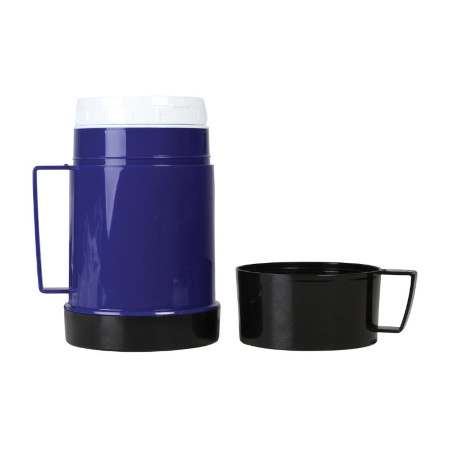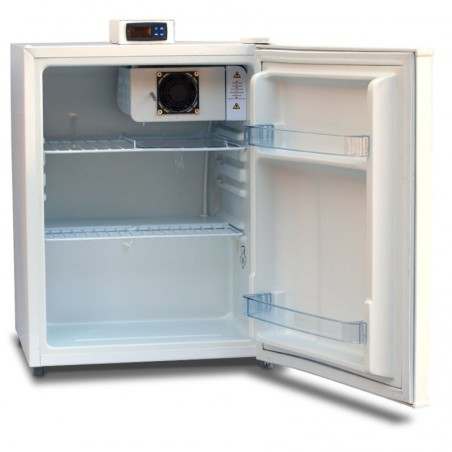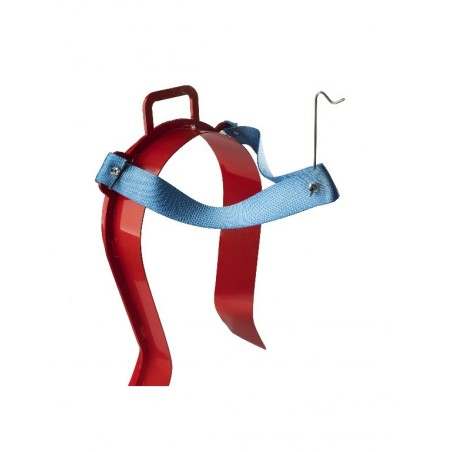Today, the implementation of post-cervical insemination (Figure 1) in pig farming is a fait accompli. The development of this technique has been mainly conducted in multiparous sows, where it is very popular due to its technical simplicity, ease of use and results obtained. Successful implementation of the post-cervical insemination in multiparous sows exceeds 95%. Furthermore, this technique allows reduction of traditional cervical insemination doses (3,000 × 106 sperm cells / 80 ml) down to half the dose (1,500 × 106 sperm cells / 40 ml) or even a third (1,000 × 106 sperm cells / 26 ml), with similar fertility and prolificacy results (Hernandez-Caravaca et al., 2012). This dose reduction leads to significant economic savings in addition to other benefits, such as reduced reflux, shorter insemination time and better use of boars (Hernandez-Caravaca et al., 2012). On the other hand, this insemination dose reduction and, therefore, the injection of fewer sperm cells in the female genital tract, requires stricter monitoring and preservation of sperm quality, as more sperm with low motility or with morphological abnormalities is discarded in the reflux, at least after post-cervical insemination (Garcia-Vazquez et al, 2015;. Hernandez-Caravaca et al, 2015.).
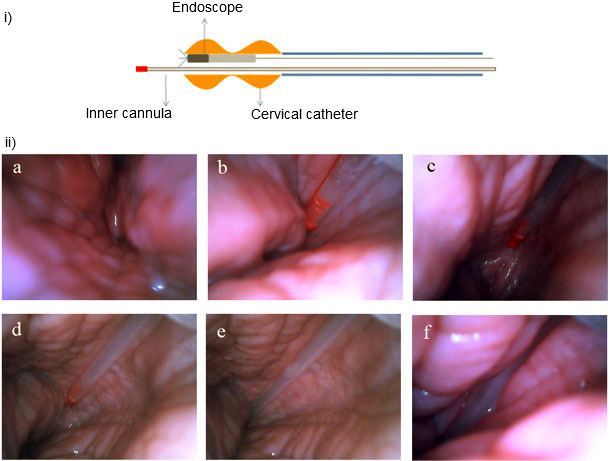

Figure 1. Post-cervical insemination view from inside the uterus. i) Diagram showing the cannula components and the insertion of an endoscope to obtain the following pictures. ii) In vivo endoscopic images from inside the uterus in a post-cervical artificial insemination: a) image of the cervix seen from the end of the cervical catheter prior to insertion of the inner cannula; b) the inner cannula starts penetrating the cervical canal; we can see the closed canal; c-d) after the uterine contractions, the canal opens and allows the insertion of the cannula in the depth of the cervix; e-f) during penetration of the cervix with the cannula, uterine contractions re-start that reduce again the lumen of the uterus.
While the use of post-cervical insemination in multiparous sows has been abundantly shown in numerous scientific publications, results from its use in gilts are scarcer, and so far few scientific studies have been conducted in these animals (Figure 1.) In 2014, Sbardella et al., published a study which compared the efficiency of the post-cervical insemination technique (1500 × 106 sperm cells / 45 ml) vs. cervical insemination (3000 × 106 sperm cells / 90 ml) only in primiparous sows showing, exclusively in terms of fertility and prolificacy, similar results between both types of insemination. These authors showed that successful implementation was also higher: more than 85% of primiparous sows could be inseminated using the post-cervical technique, although introducing the cannula presented some degree of difficulty in about 30% of the inseminated primiparous sows. Similarly, Diehl et al., (2006) found a medium / high degree of difficulty in 45% of the inseminated primiparous sows.
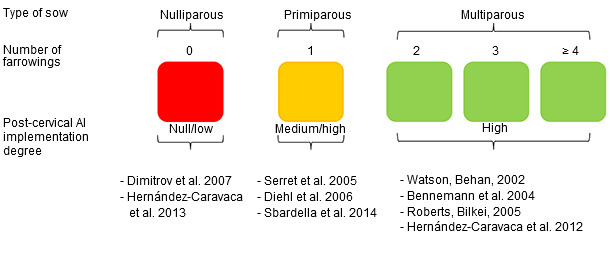
Figure 2. Degree of post-cervical insemination application in different types of sows.
The application of post-cervical insemination in gilts is currently very limited, if not negligible (Figure 2.) So far, a limited number of in-depth studies have been conducted on the use of post-cervical insemination in gilts. In an experiment we carried out, we found that only 25% of gilts could be inseminated using the post-cervical technique with the post-cervical insemination catheters currently used in multiparous sows. Dimitrov et al. (2007) conducted a study of post-cervical insemination in gilts, but it does not specify the degree of difficulty encountered. It is therefore necessary to search for alternatives to either implement this technique or modify it according to the type of animal we are working with. The administration of certain drugs, such as vetrabutine hydrochloride, prior to insemination in those sows where the introduction of the post-cervical insemination cannula had not been possible, resulted in a 34% improvement of application (Hernandez-Caravaca et al., 2013.) Despite the improvements made, the main limitation in this type of sows, as well as the aforementioned primiparous sows, is their poorly developed reproductive systems. Further study on these animals, especially at the cervix level, where passage of the inner cannula becomes more difficult due to its poor development and narrow uterine lumen, could lead us to rethink the type of insemination needed in gilts, the design of new adapted catheters or the application of other techniques as alternatives to the use of post-cervical insemination.






